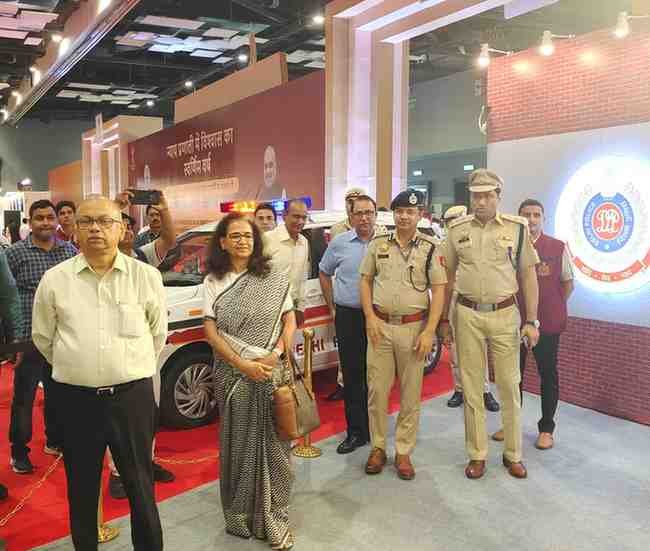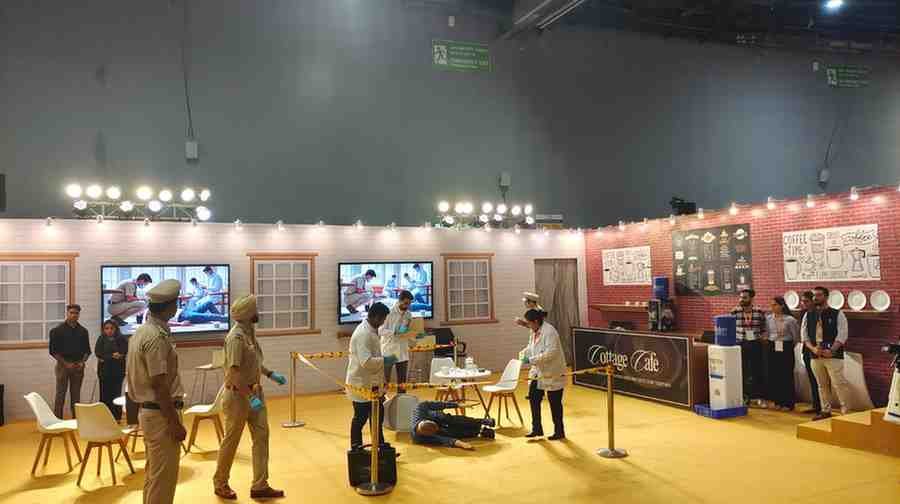New Delhi: A week-long exhibition marking the first anniversary of India’s new criminal laws—Bharatiya Nyaya Sanhita, Bharatiya Nagarik Suraksha Sanhita, and Bharatiya Sakshya Adhiniyam—was inaugurated today at Bharat Mandapam, New Delhi. Scheduled from 1st to 6th July 2025, the exhibition aims to educate the public and stakeholders on the significant shifts in the criminal justice landscape and the seamless integration of technology into the legal process.
The landmark legal reforms, implemented on 1st July 2024, aim to modernize India’s criminal justice system, streamline legal procedures, and promote victim-centric justice. The exhibition offers an in-depth and interactive look at how these changes are playing out on the ground.
Multi-Dimensional Experience
Visitors to the exhibition are greeted with an immersive journey through the lifecycle of a criminal case—from the first response to final appeal. Spread across nine thematic zones, the exhibition recreates key stages in the criminal justice chain. Through interactive displays, animations, video demonstrations, and role-play, each section underscores how the new legal provisions and tech tools are transforming law enforcement and judicial practices.
The exhibition focuses on the synergy between the five pillars of the criminal justice ecosystem—Police, Hospitals, Forensic Departments, Prosecution, and Judiciary—and how digital integration is enabling faster, more transparent, and evidence-based decision-making.

Legal and Technological Reforms
The event underscores several noteworthy features introduced through the new laws and digital platforms:
Mandatory Forensic Site Visits: Investigations into serious crimes (punishable with over seven years’ imprisonment) now require the mandatory presence of forensic experts at the crime scene, enhancing scientific accuracy and reducing errors in evidence collection.
eSakshya for Evidence Management: The eSakshya platform enables secure digital collection and storage of evidence, ensuring its admissibility in court while preventing tampering.
eForensics 2.0 via CCTNS: Forensic exhibits are now transferred electronically through the Crime and Criminal Tracking Network & Systems (CCTNS), drastically reducing time delays and manual errors.
MedLEaPR Application Integration: Hospitals can directly send post-mortem and medico-legal reports to investigating agencies using the MedLEaPR app, improving coordination and expediting evidence sharing.
Flexible Police Custody Remand Window: Investigators now have up to 60 days post-arrest to seek police custody, providing operational flexibility as opposed to earlier fixed time constraints.
Digital Chargesheet Sharing: Draft chargesheets can now be digitally submitted to the prosecution via Object Storage, removing file size limits and enabling faster review.
Remote Witness Testimony: Witnesses can now provide testimony through video conferencing, improving witness protection, minimizing travel, and reducing court delays.
Biometric & Facial Recognition Tools: Use of NAFIS (National Automated Fingerprint Identification System) and Chitrakhoji facial recognition technology is helping police identify repeat offenders more swiftly and accurately.
Trial in Absentia: The law now permits proceedings against absconding accused in their absence under specific conditions, helping tackle long-pending cases.
Proactive Bail Measures for Undertrials: A notable humanitarian reform mandates Jail Superintendents to initiate bail applications for undertrial prisoners who have completed one-third of their maximum sentence period.
An Inclusive Awareness Drive
Open to the general public, legal professionals, enforcement agencies, academic institutions, and civil society organisations, the exhibition aims to foster a better understanding of the legal changes and their practical application. It serves as a learning hub for those directly and indirectly involved in law enforcement and justice delivery.
Authorities involved in organizing the event emphasized the government’s commitment to transparency, technological advancement, and victim-sensitive justice. The displays not only illustrate legislative changes but also highlight real-time implementation of these measures across various domains of criminal justice.
Strengthening Justice Through Digital Reform
The overarching theme of the exhibition is the digital transformation of India’s legal architecture, moving from a largely manual, paper-driven system to one that prioritizes efficiency, scientific investigation, data integrity, and citizen-centric justice.
By spotlighting how various technologies are bridging institutional gaps—from hospitals to courts—the exhibition paints a forward-looking picture of India’s criminal justice system under the new legal framework.
As India steps into a new era of legal reform, this exhibition stands as a testament to the government’s focus on procedural fairness, transparency, and faster delivery of justice.








